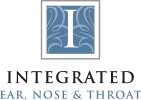Sleep Apnea

Sleep apnea is a serious sleep disorder (somnipathy) that occurs when the upper airway becomes blocked repeatedly during sleep, reducing or completely stopping airflow. This is known as obstructive sleep apnea (OSA). If the brain does not send the signals needed to breathe, the condition may be called central sleep apnea.
Causes of Sleep Apnea
Some people develop sleep apnea because of their physical structure and others get it due to a medical condition, such as obesity, large tonsils, endocrine disorders (e.g., hypothyroidism), neuromuscular disorders, heart or kidney failure, certain genetic syndromes (e.g., cleft lip or cleft palate), and premature birth.
Risk Factors for Sleep Apnea
There are many risk factors for sleep apnea, including aging (fatty tissue buildup in the neck and tongue), unhealthy lifestyle habits (alcohol, smoking, unhealthy eating and lack of physical activity), being male, family history and genetics (inherited, structural development of the face and skull), having a nasal obstruction due to a deviated septum, allergies or sinus problems, and race or ethnicity (more common among African Americans, Hispanics, and Native Americans).
Signs and Symptoms of Sleep Apnea
The most common signs that someone may have sleep apnea include reduced or absent breathing (apnea events), frequent loud snoring, and gasping for air during sleep.
The symptoms associated with sleep apnea include excessive daytime sleepiness and fatigue; a decrease in attention, vigilance, concentration, motor skills, and verbal and visuospatial memory; dry mouth or headaches when waking; sexual dysfunction or decreased libido; and waking up often during the night to urinate.
Women tend to have more issues with headaches, fatigue, depression, anxiety, insomnia, and sleep disruption.
Symptoms of Sleep Apnea for Children
Symptoms of sleep apnea are different for children than for adults. Children may experience a problem with bedwetting, asthma exacerbations, hyperactivity, and learning and academic performance issues.
Children are also more at risk for sleep apnea if they have enlarged tonsils and adenoids.
Complications Associated with Sleep Apnea
Complications can develop with sleep apnea, especially if it isn’t treated. Untreated sleep apnea increases your risk for the following disorders:
- Asthma
- Atrial fibrillation
- Cancers (pancreatic, renal, and skin)
- Chronic kidney disease
- Cognitive and behavioral disorders
- Diseases of the heart and blood vessels
- Eye disorders (glaucoma, dry eye)
- Metabolic disorders (glucose intolerance, type 2 diabetes)
- Pregnancy complications (gestational diabetes, gestational high blood pressure)
Sleep apnea can also cause your body to be in a chronic state of inflammation. This happens because your blood oxygen levels drop due to obstructive sleep apnea, so your body and brain trigger the fight or flight response. This, in turn, increases your blood pressure and heart rate and wakes you from sleep so that your upper airway can open. During sleep, these cycles of decreased and increased blood oxygen levels can cause inflammation that may contribute to the buildup of plaque in blood vessels (atherosclerosis), which can increase your risk of heart attack or stroke. Chronic inflammation can also damage the pancreas and lead to type 2 diabetes.
Diagnosing Sleep Apnea
Diagnosis of sleep apnea involves a review of your family and medical history, a physical exam, and sleep study results.
Specifically, your doctor will ask you questions about your family and medical history with sleep apnea, such as
- Whether or not you have a family history for sleep apnea or another sleep disorder;
- Whether or not you have risk factors for sleep apnea; and
- Whether or not you have experienced any complications from untreated or undiagnosed sleep apnea.
For your physical exam, your doctor will look for signs of other conditions that may increase your risk for sleep apnea, including obesity, large tonsils, narrowing of the upper airway, or a large neck circumference (>17” for men or >16” for women is considered large). Your doctor will also examine your jaw size and structure, the size of your tongue, and your tongue’s position in your mouth, as well as your lungs, heart and neurological systems to see whether you have developed any complications of sleep apnea.
As for a sleep study, your doctor will order this for you, and it can be done at home or at a sleep center. The study records the number of episodes of “slowed or stopped breathing,” and the number of central sleep apnea events detected in an hour. The study also monitors blood oxygen levels and brain and heart activity during sleep.
Results of your sleep study can tell your doctor if you have mild, moderate, or severe sleep apnea based on the number of sleep apnea events you have within an hour. They can also help determine the type of sleep apnea you have, obstructive versus central sleep apnea.
Difference Between Obstructive and Central Sleep Apnea
Obstructive sleep apnea is more common than central sleep apnea. With obstructive sleep apnea, your sleep test results will show an increase in breathing muscle activity when muscles try to open an obstructed upper airway. With central sleep apnea, sleep study results show decreased activity in chest muscles, which can lead to periods of slowed or no breathing.
Obstructive sleep apnea is a serious health condition characterized by a repetitive stopping or slowing of breathing that can occur hundreds of times during the night. This often leads to poor quality sleep and excessive daytime sleepiness. Risks of untreated sleep apnea include high blood pressure, stroke, heart disease, and motor vehicle accidents. It is estimated that 1 in 5 Americans have at least mild OSA.
Snoring and Sleep Apnea
Not everyone who snores has sleep apnea. But anyone who snores loudly, nightly and has other symptoms, like pauses in breathing at night or daytime sleepiness, should talk to a doctor to rule out sleep apnea.
Other Testing for Diagnosis Sleep Apnea
Based on the information gathered during your consultation, your doctor may order the following additional tests to rule out other medical conditions that can cause sleep apnea:
- Blood tests to check levels of certain hormones (e.g., thyroid, growth, DHEAS), and to rule hypothyroidism, acromegaly, and polycystic ovary syndrome (PCOS).
- Pelvic Ultrasound to examine ovaries and detect cysts and to rule out PCOS.
Treatment Options for Sleep Apnea
Sleep apnea can either be medically managed or surgically corrected. Your doctor will recommend the best treatment option that helps you to maintain an open airway during sleep. Usually, these recommendations depend on the type and severity of your sleep apnea.
Medical Management
Mild cases of sleep apnea can be medically managed, and may include one or more of the following recommendations:
Healthy Lifestyle Changes. Patients should follow a healthy lifestyle that includes eating a heart-healthy diet, limiting alcohol intake, aiming for a healthy weight, getting regular physical exercise, developing healthy sleeping habits, and quitting smoking.
Sleep Positioning Pillows. These are special anti-snoring pillows that support side sleep and support the position of the head for optimal airflow.
Mouthpieces/Oral Appliances. Patients wear these mouthpieces while they sleep. They are custom-fit devices (molded to your individual anatomy) that help keep your lower jaw (mandible) and tongue in place. Specifically, they are designed to keep the lower jaw in the forward position and they help to mitigate the backward compression of the tongue base on the oral airway. Patients would need to visit a dentist or orthodontist for fittings.
Continuous Positive Airway Pressure Device (CPAP). CPAP devices resist the collapse associated with obstructive sleep apnea. Patients sleep with a mask that opens the airway with forced air, and they can also use facial pillows to wear with the masks for added comfort.
Surgical Management
Surgery is an effective and safe treatment option for many patients with snoring and sleep apnea, particularly those who are unable to use or tolerate CPAP. Proper patient and procedure selection are critical to successful surgical management of obstructive sleep apnea. Talk to one of our ENT doctors for a complete evaluation and to learn what treatment may be best for you.
Pillar Procedure. This is a minimally invasive, FDA-approved treatment for mild to severe obstructive sleep apnea. It is performed in an office setting under local anesthesia, and there is minimal post-procedure discomfort or downtime. The procedure involves the placement of small implants into the soft palate to create stiffening and to minimize the soft tissue collapse associated with obstruction.
Tonsillectomy. Tonsils are organs located at the back of the throat. When they get enlarged, they lead to obstruction of the oral airway. This condition is more common in children than in adults. The procedure (tonsillectomy) involves surgical resection of enlarged tonsils.
Uvulectomy. The uvula is the “punching bag” in the back of the throat. When it gets enlarged or elongated, it may contribute to obstructive sleep apnea. A uvulectomy involves surgical resection of the uvula, and it is usually done in conjunction with other procedures, like the Pillar Procedure or tonsillectomy.
Inspire Treatment. This is an FDA-cleared treatment for moderate to severe obstructive sleep apnea. It is performed as an outpatient procedure under general anesthesia, and it involves the placement of an implantable, neurostimulation device under the skin of the neck and chest through three small incisions. The device delivers mild stimulation to key upper airway muscles to keep the airway open when patients sleep.
Ultimately, effective treatment of obstructive sleep apnea depends on the proper diagnosis and location of the anatomic source of the problem.
Contact Us
If you think you have the signs and symptoms of sleep apnea, call Integrated ENT of Lone Tree at (303) 706-1616 for evaluation, diagnosis, and treatment.








